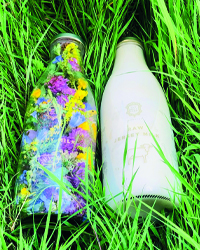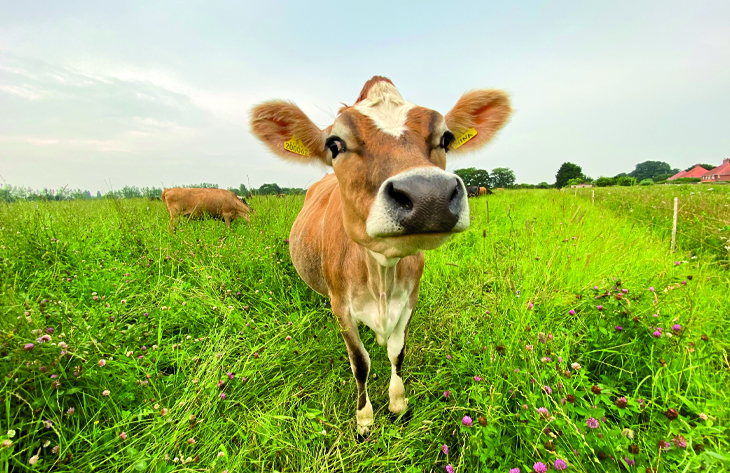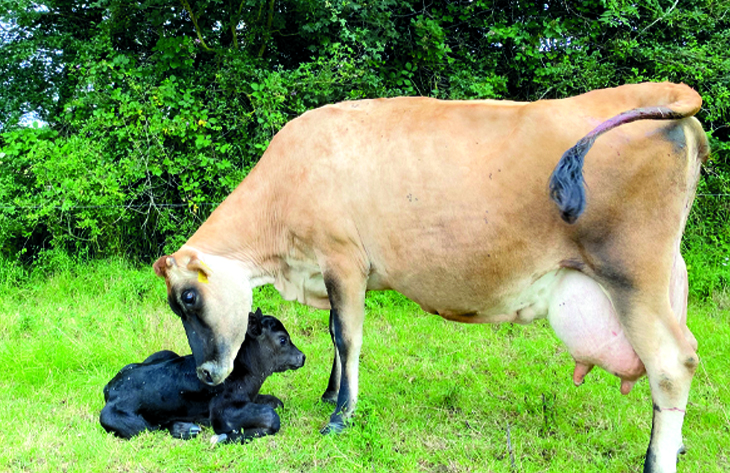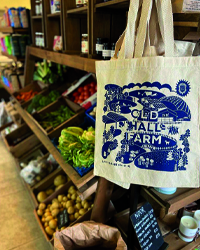Rebecca Mayhew from Old Hall Farm in Woodton talks about something very close to her heart in her latest column – the superfood that is milk.

Milk has been in the news a lot recently, thanks to BBC Panorama. If you haven’t watched it yet, don’t bother – it is sensationalist viewing, and doesn’t represent a fair view of dairy farming in the UK. In short, it showed footage of what now appears to be the staged abuse of dairy cows on a farm in Wales. However, there are lots of reasons to be careful about what milk you buy and where you buy it from – not all milk is created equal, as you’ll read below.
The increasing industrialisation of milk over the past 40 years has led to an almost tasteless product of bland uniformity not unlike mass produced wine. Unfortunately, as with many farming practices a focus on increasing profit and yield has driven a decline in quality. In the case of milk, this means the decline in quality of the end product, and in some cases the quality of the life of the dairy cows.
Many of you will remember that milk used to be something with body, depth and flavour, that altered with the seasons as the diet of the cow changed from sweet summer grass to the richer flavours of conserved winter forage. A glass of milk was a drink to be savoured, and there was a scramble in the morning to be first to the bottle in order to be the winner of the cream over your porridge or cereal!
A cow’s diet affects both the taste and nutritional value of the milk she produces, as well as her overall health. A rich, diverse diet influence the colour, flavour, aroma, and connect the flavour of the milk to the land to create a terroir, as you’d expect wine from a particular vineyard to.
The problems with modern day dairy cow management are that many concentrates are fed to the cows, in the form of grains, soya, brassicas, root crops and other feedstocks – all in the name of yield generation i.e., to encourage the cow to produce more milk. The problems with these concentrates are that cows are not designed to eat them, and therefore they severely impact the rumen (cow’s stomach) to the detriment of the quality of the milk and, of course, the long term health of the cow.
Furthermore, the more concentrates are fed, the less grass/pasture is consumed, yet pasture provides the most accessible source of a full range of vitamins and minerals in a balanced ratio. The more species diversity that the cow has access to in the field, or in the feeder by way of preserved hay/haylage in the winter, and of course the healthier the soil, the wider the range of micronutrients in the pasture for the cow to select.



This of course has a massive knock-on effect for us humans – cattle grazing on diverse pastures will produce more nutrient dense milk and meat. Healthy fates including high quantities of oleic acid as well as more carotenoids give the milk a creamier colour, more Vitamin D, and more vitamin K2. They will also produce more milk containing Omega 3 fatty acids. Feeding grain, even in small quantities, damages the benefit of the milk as a food.
The terroir of regenerative milk is very noticeable, and the cream line is clearly visible due to the lack of homogenisation. Regenerative milk from cows with access to diverse pastures and forage contains Omega 3, healthy fatty acids, Vitamin A and beta carotene, Vitamins D, E, K2, as well as many water soluble micronutrients including calcium, magnesium, phosphorous, potassium, selenium, zinc, folate, vitamin C, B1, B2, B3, B5, B6 and B12, all enhanced of course from accessing healthy soils. The diversity of plants and the healthy soil is, of course, what adds the flavour, and enhances the terroir of the milk. Needless to say, milk from cows that are fed a monoculture of artificial nitrogen soaked grass does not taste the same, nor does it contain all of the beneficial vitamins and minerals as described above – this has been proven in many studies, notably by Newcastle University.
The diet of the cow, the quality of her life, and the quality therefore of her milk are inextricably linked.
How then, do we choose where to buy our milk from? As with most food products, the best place to look is not the supermarkets. We are blessed in Norfolk to have direct access to many dairies, and you can then question the farmer direct as to what the cows are given to eat. At Old Hall Farm for instance, we are Purely Pasture Fed, that means that our cows are not fed anything except grass, hay, haylage, and grass pellets as a treat in the parlour.
Lifestyle is also crucial – the wellbeing of the cow clearly affects the quality of her milk. Access to pasture whenever possible is essential for the wellbeing of the cow and thus the nutrient density of the milk. Some cows never leave the confines of their shed – clearly this is not ideal for a roaming, grazing animal.
Animal welfare is also a key issue that we must be aware of. The separation of calves at birth is a very emotive subject. Simply put, the economies of scale have forced big dairies to take calves from their mothers and bottle feed them, rather than let nature take its course. Fortunately, a number of dairies in the UK now keep their cows and calves together for several months, as do we at Old Hall Farm. This is called cow-with-calf dairying and ensures that not only are the cows and calves much happier, but also much healthier. Milking once a day ensures that there is enough milk for everyone, and that the dairy cow is not put under too much stress to produce more milk than she would naturally.

Where you can, do buy raw milk – pasteurisation damages the delicate minerals and enzymes that make milk the superfood it is. If you can’t get access to raw milk, then always try to buy un-homogenised milk – make sure you can see the cream line! Homogenisation breaks up the delicate fat particles in the milk, making it impossible for our bodies to process the milk efficiently and we therefore end up with too much fat in our blood stream.
As with all things, the least processes our food goes through, the better! Raw, un-pasteurised and un-homogenised – natural milk, from regenerative farming systems is, quite simply, one of the best superfoods you can buy.
- For more information about all things raw milk, cow-with-calf dairying and regenerative farming, contact Rebecca Mayhew at Old Hall Farm on 01508 333110 or moo@oldhallfarm.co.uk
- Click here for The Old Hall perfect leg of lamb recipe – don’t forget to send us your photots! @eatnourishdrink / #eatnourishdrink










